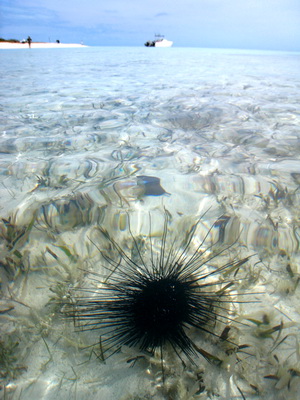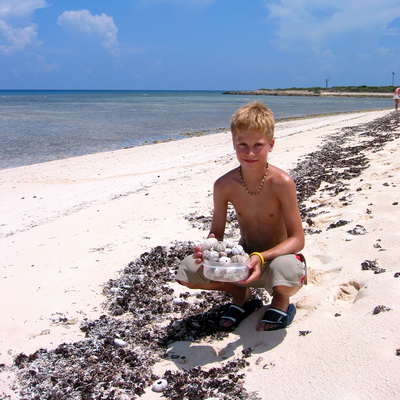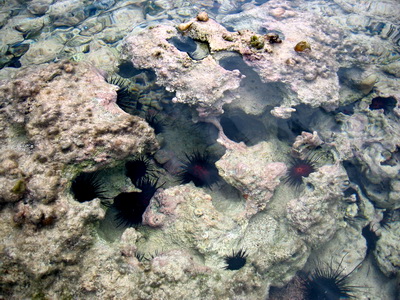
The water was calm and clear as you can see and I spotted this sea urchin in the shallows. It made for an interesting photo!
Marta

The above photo shows a test from the Great Red Footed Urchin. I didn’t realise that both sand dollars and sea biscuits are urchins too.
I just love finding these and you’ll be able to look for them too when holidaying here in the Turks and Caicos Islands.
Hope to see you soon,
Marta

Kai collects sea urchin tests or skeletons found in the seaweed along the beach at the North West Point
Every trip out to this particular stretch of beach at the North West Point results in finding sea urchin skeletons or “tests”. There were hundreds of them this particular day and Kai and Sandra couldn’t believe their eyes at how many had been washed up and were lying in the seaweed.
There are more than 700 species of sea urchins and the name means sea hedgehog, hedgehog being one meaning of the word “urchin”. Some of the most frequently seen colours are black, red, brown, purple and pink.
Did you know that sea urchins in large populations are a good thing as they graze on algae and prevent algae overgrowth on reefs?
Happy shelling,
Marta
Another walk out at the North West Point where the beach is usually strewn with sea urchin tests (skeletons). If you walk out into the water you will find many live sea urchins which are black and black with red. These sea creatures apparently come in many different colours.

Long-spined Sea Urchins tucked into holes in the rocks and the coral reef just below the water out at the North West Point
The bottom side of a sea urchin has five teeth with which they eat algae. They are found in areas where there are lots of seagrass, seaweed and other foods.
Marta
Isn’t this something ! Anna found this sea urchin on the beach and I thought it just had all kinds of encrustations making it look quite unique. However on looking things up, I discovered that this is a Club or Pencil urchin.
See you on the beach,
Marta